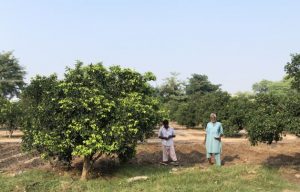NEW YORK and LONDON, Oct. 11, 2022 (GLOBE NEWSWIRE) — Today, marketing and sales teams have to connect with their consumers and buyers in entirely new ways. But disjointed data, complex tech stacks, and siloed work practices can derail those efforts.
That's why McKinsey & Company is extending the power of CustomerOne's proven, comprehensive approach. By driving personalization at scale, sales growth, and enabling data–driven pricing, organizations in any industry can achieve 10–20% revenue growth.
Powered by QuantumBlack, AI by McKinsey, CustomerOne uses a Hybrid intelligence approach, combining human understanding with machine and AI intelligence, to reveal customer insights, identify opportunities for growth, and deliver lasting impact at speed. It also delivers agile operating models and builds capabilities to transform critical insights into customer action.
Surface Actionable Insights with End–to–End Growth Transformations
Customer preferences, demands, and dynamics are rapidly shifting. For organizations with siloed functions and complex technology stacks, it is challenging to stay in lock step with their customers. The data boom, as well as the proliferation and convergence of sales channels, makes this challenge even harder. To capture the right moments across every channel, identify new growth horizons, and capture long–term value, these organizations need an end–to–end approach that aligns technology with deep expertise.
CustomerOne seamlessly integrates strategy, technology, AI–powered growth capabilities, and implementation accelerators. It drives top–line growth, creates long–term customer value, and helps marketing and sales teams achieve higher returns by optimizing efficiency and effectiveness across the entire sales funnel.
"We have seen a lot of seismic shifts in the way consumers and buyers are changing," said Kelsey Robinson, Senior Partner, McKinsey & Company. "They have tremendous power. The ability for marketing and sales teams to succeed in this new world hinges on what they do with the incredible amounts of consumer–permissioned data to get closer to the customer, personalize experiences, and create "ignite' moments."
CustomerOne's expanded set of domain capabilities includes:
- Personalization and Customer Value Management: Drives personalization at scale by integrating unified customer data, machine learning algorithms, and analytics, so marketers can derive the right insights and act on them. Outperforming companies achieve 40% more of their revenue from personalization than their peers.
- Sales Growth: AI–powered capabilities enable sales teams to win new customers, increase customer retention, and drive loyalty. Companies that do this well drive 10–20% revenue growth.
- B2B Pricing: Helps organizations analyze complex market dynamics, including customer willingness to pay, customer and product segmentation, and contract performance. CustomerOne uses the outputs to dynamically manage pricing and performance, and achieve above–market improvements. Companies that use data–driven pricing achieve 2–7% return on sales by expanding their margins.
"Successful change extends across the commercial organization. From the strategic decision on where and how to grow, to the insights that inform each customer interaction, most organizations struggle when it comes to putting the right talent, expertise, capabilities, and technology into one comprehensive approach to drive change. The extension of CustomerOne brings our capabilities together as one to drive faster end–to–end transformations for our clients across industries," said Stuart Schardin, Partner at McKinsey & Company.
"Even in the best of times, growth is not easy. In fact, 25% of companies don't grow at all," said Jeff Hart, Partner, McKinsey & Company. "At the core of what we do is to help our clients across industries meet this moment with a proven, technology–enabled approach that makes it easier to consume insights and recommendations, and quickly unlock new growth opportunities. For example, a logistics company using this approach was able to expand its margins by 44%, while a chemical company achieved 2% return on sales in a matter of six weeks."
To learn more about CustomerOne, click here.
About McKinsey Growth, Marketing & Sales
The mission of the McKinsey Growth, Marketing & Sales Practice is to help leaders of both consumer and business–to–business clients create Growth That Matters through meaningful transformations and marketing–driven profit. The practice helps our clients set their strategic direction, develop their marketing and sales capabilities, and connect their organization to realize the full potential of today's omnichannel opportunities. Clients benefit from McKinsey's experience in core areas of marketing, B2B and B2C pricing, customer experience, and sales and channel management.
For further information please contact:
US: Digennaro Communications
MaryLiz Ghanem "" EL
McKinsey–DiGennaro@digennaro–usa.com
917–518–8422
UK: 3THINKRS
Ruth Jones / Becca Ross
mckinsey@3thinkrs.com
+44 208 0872843








